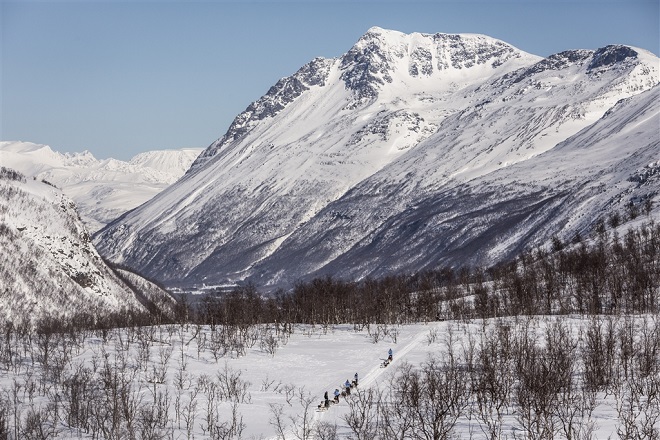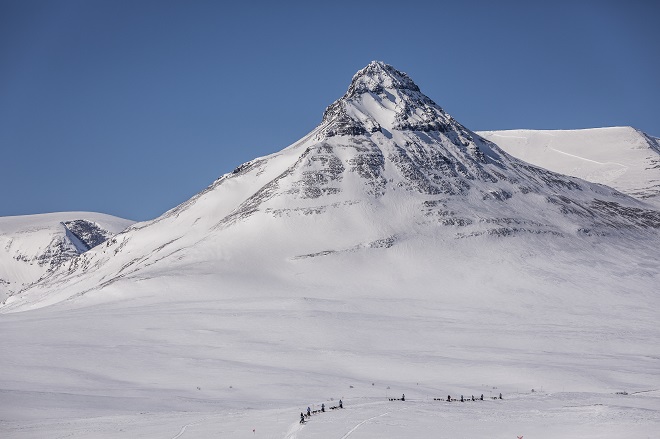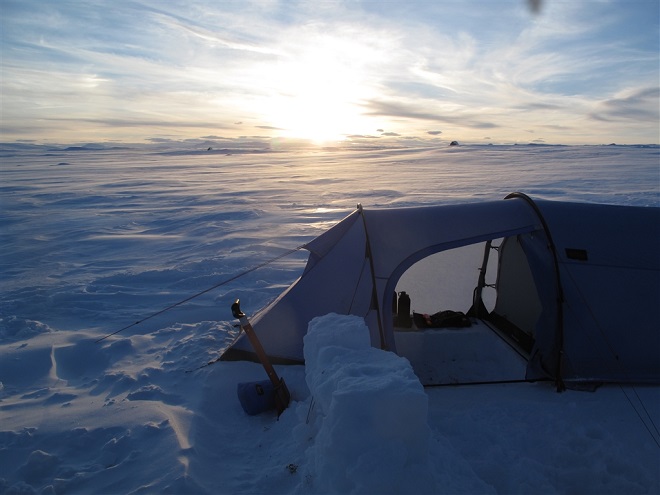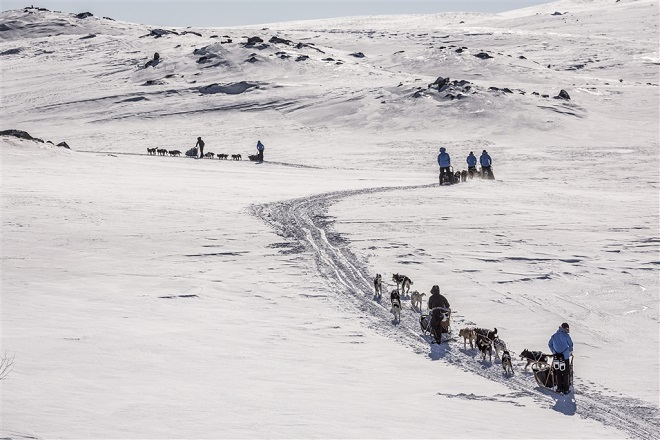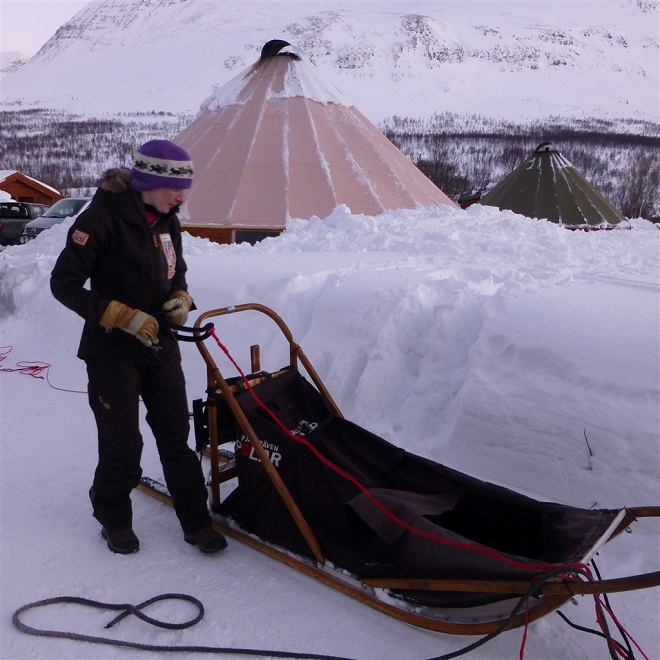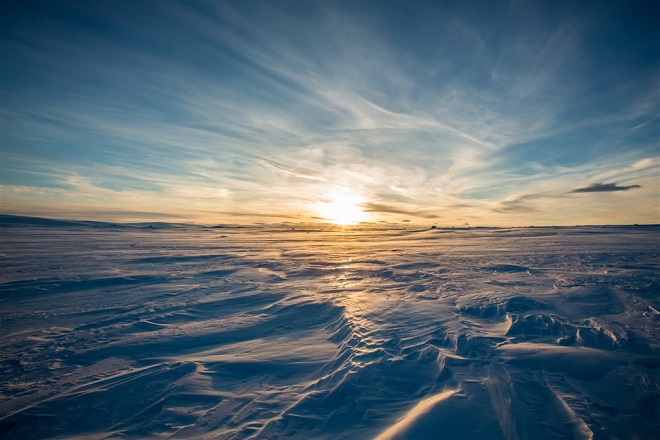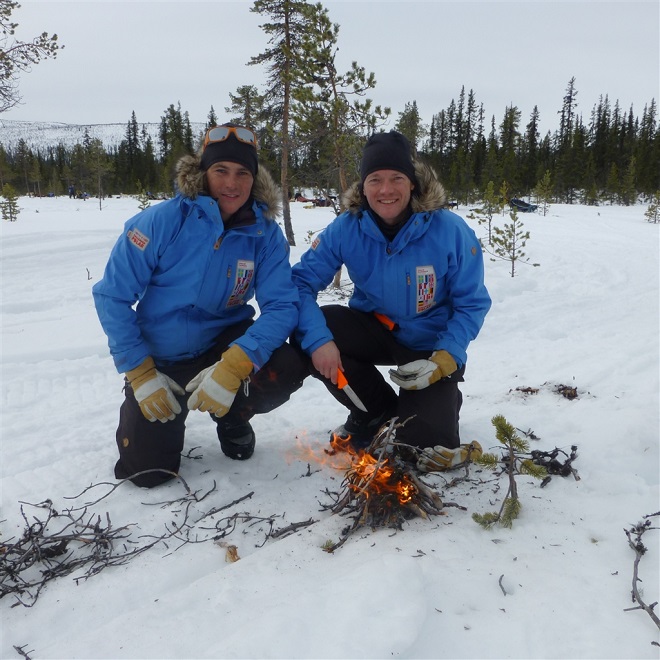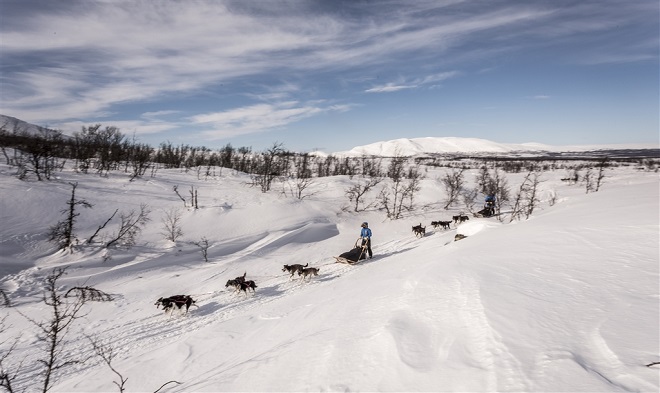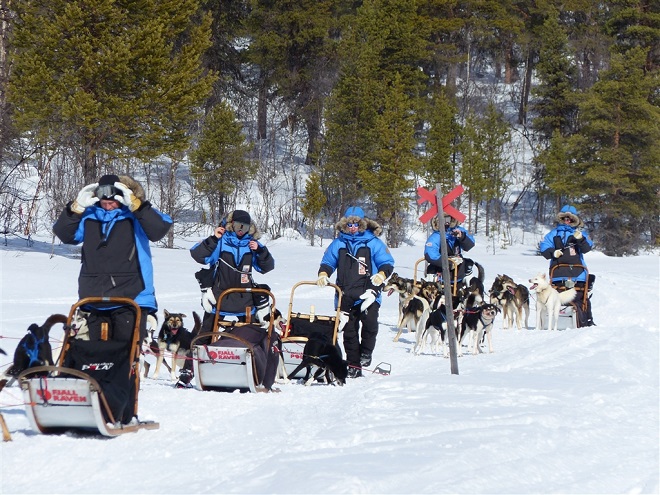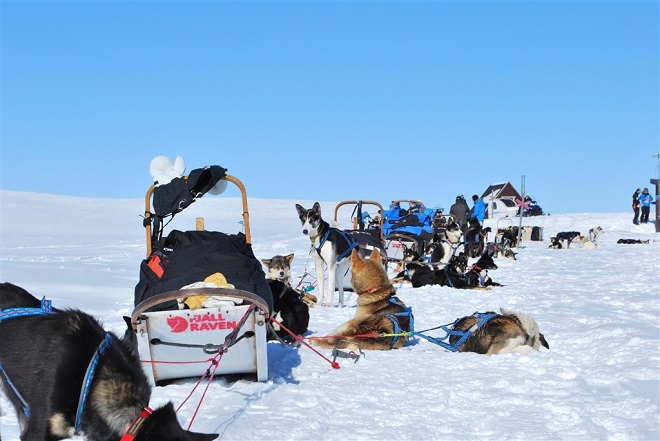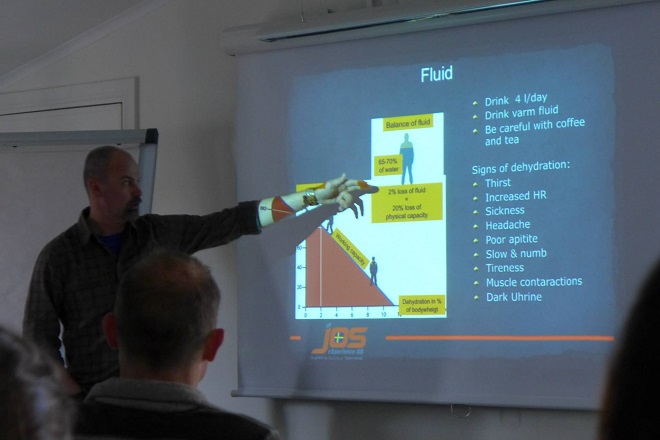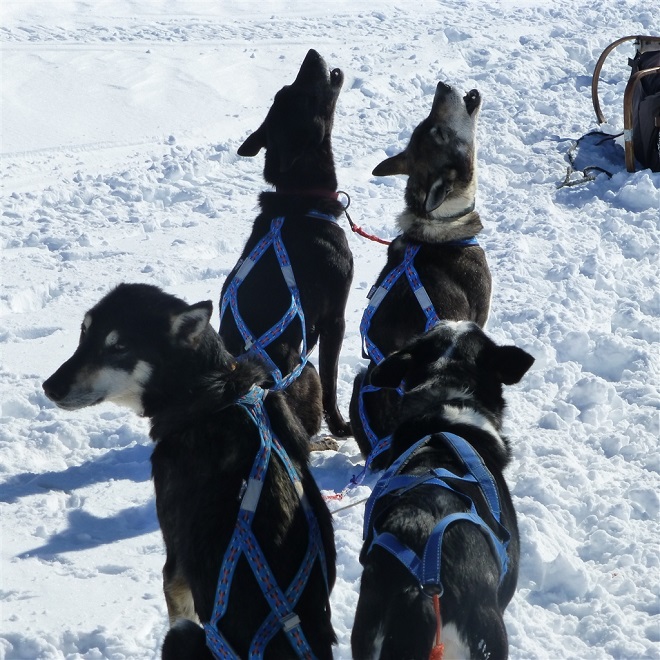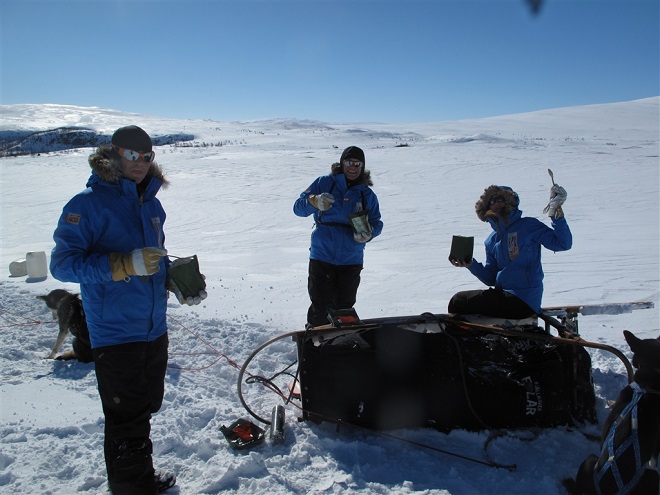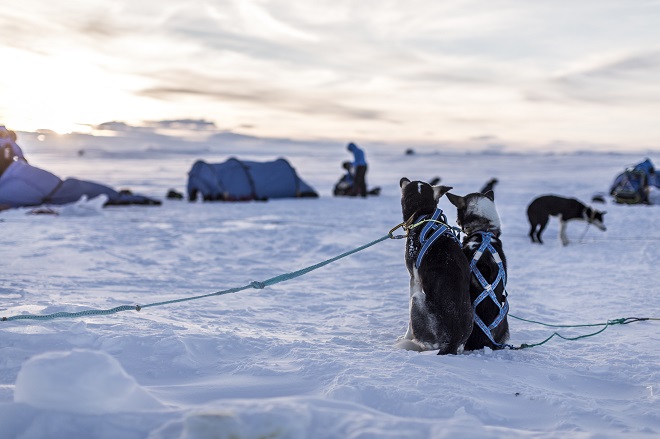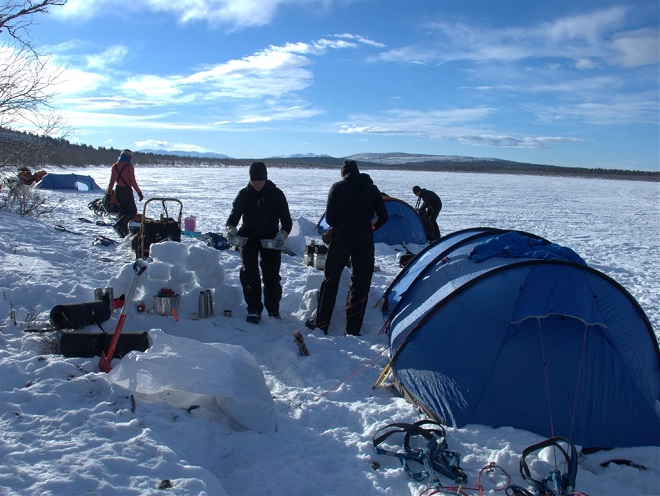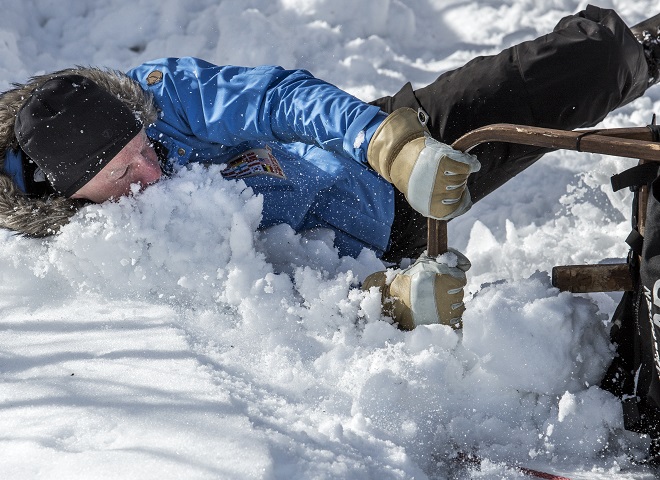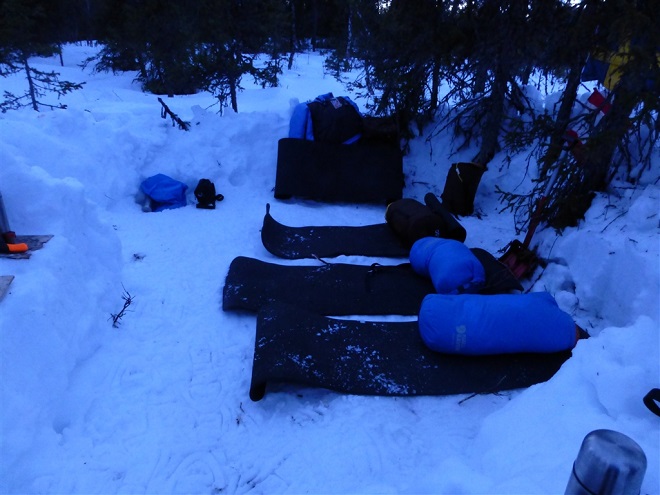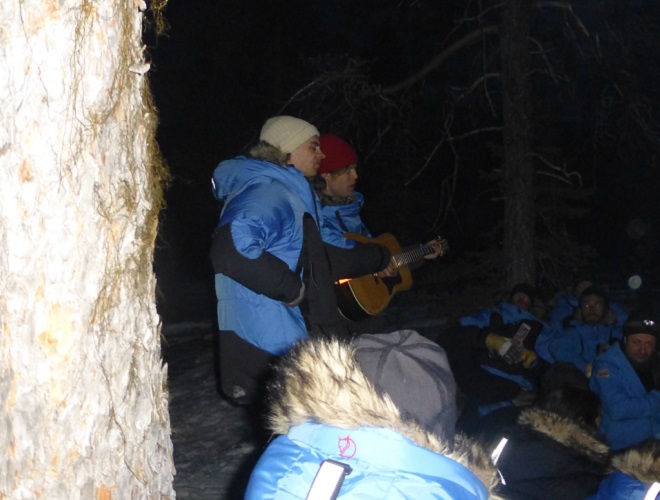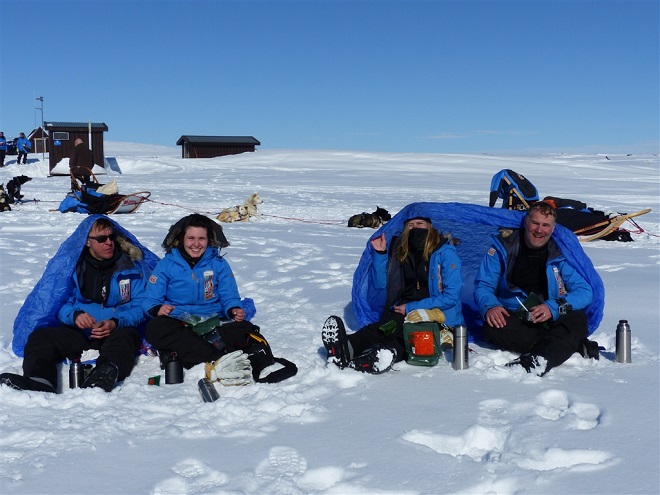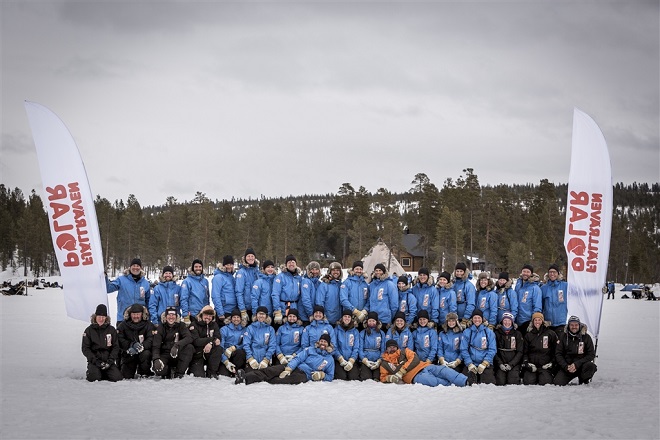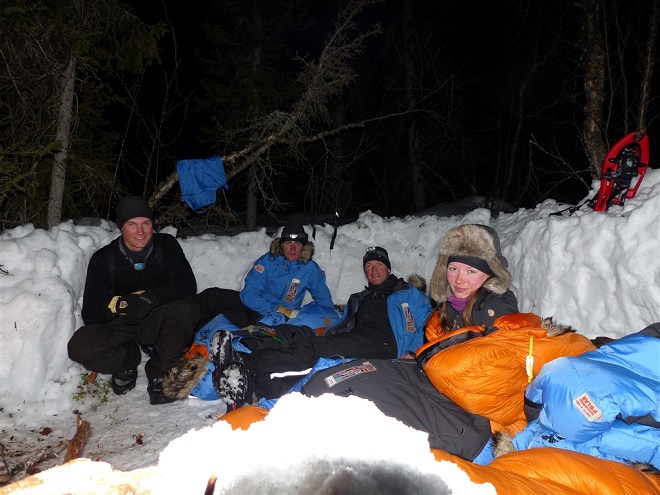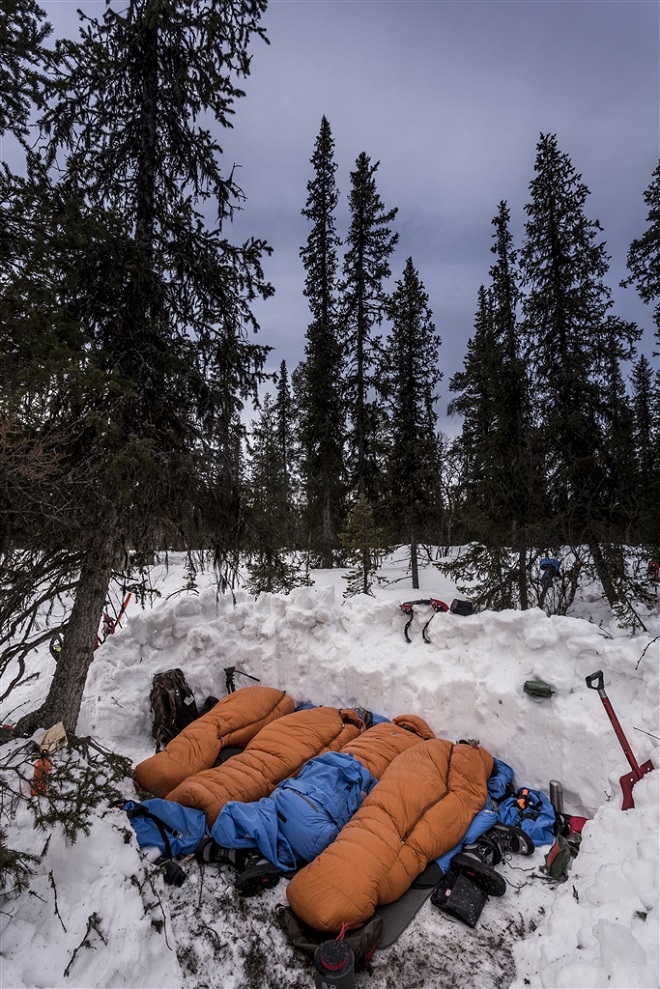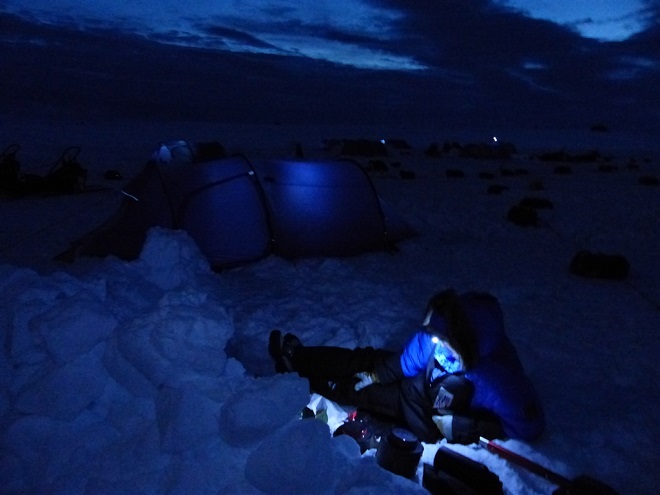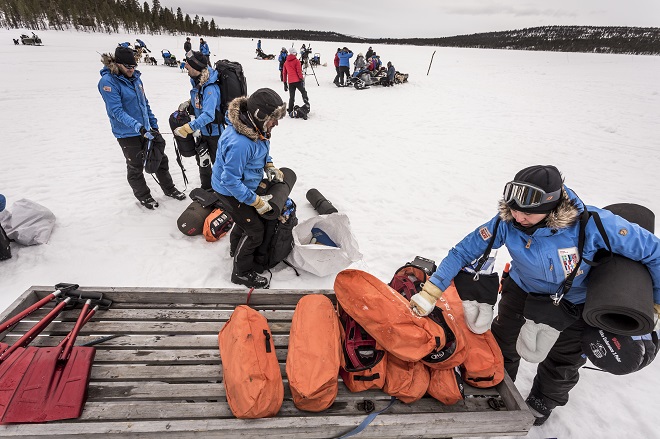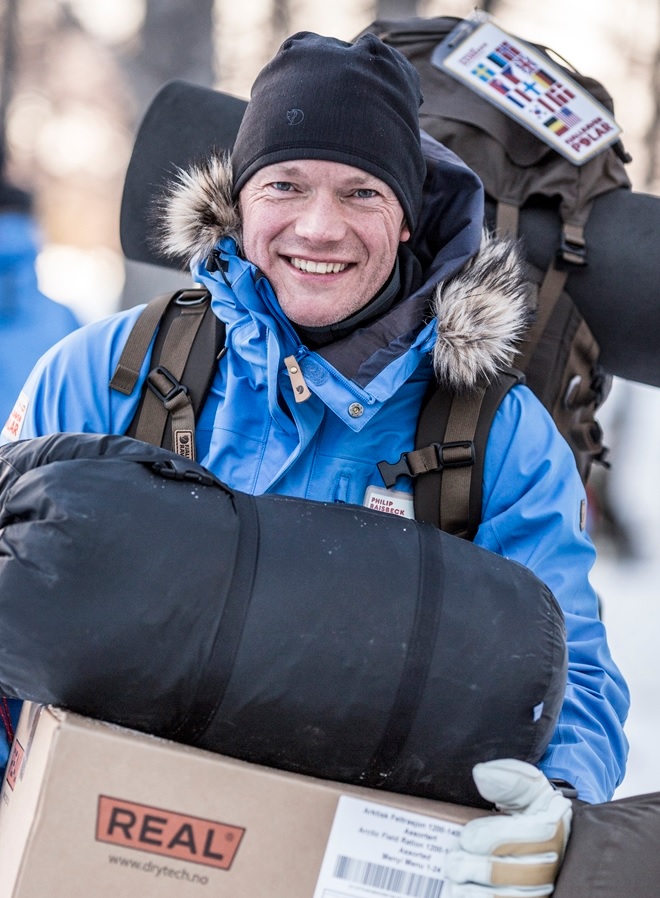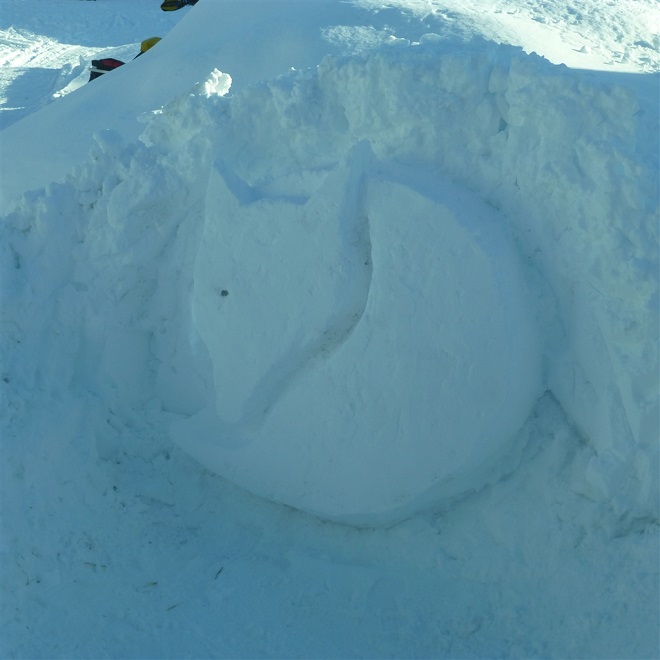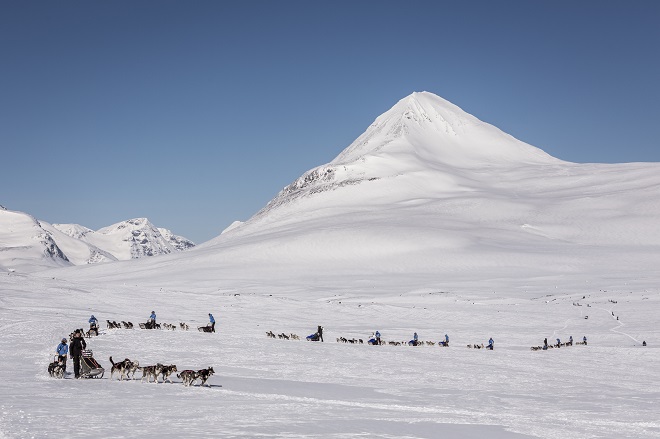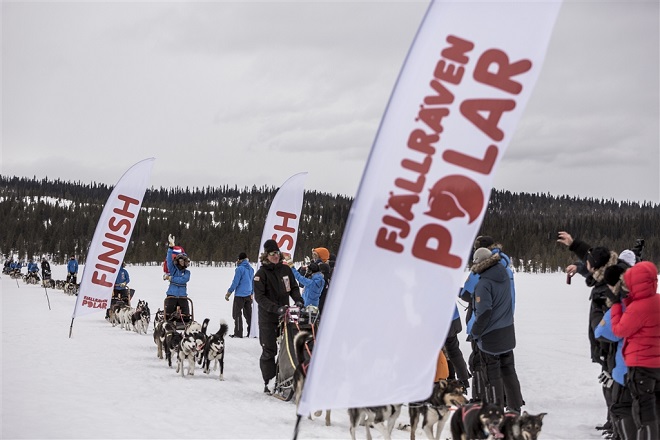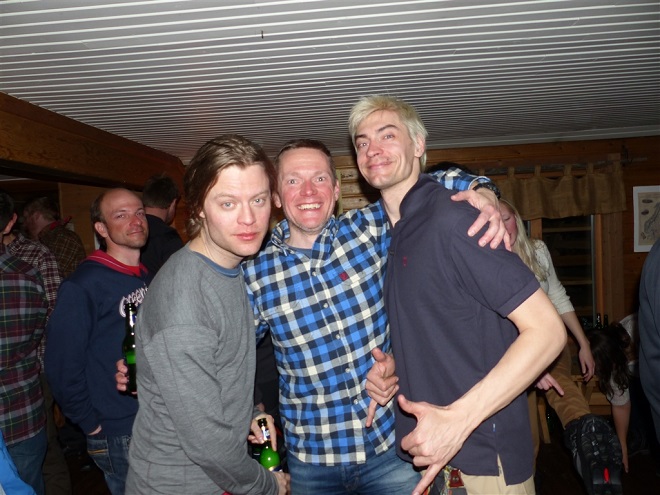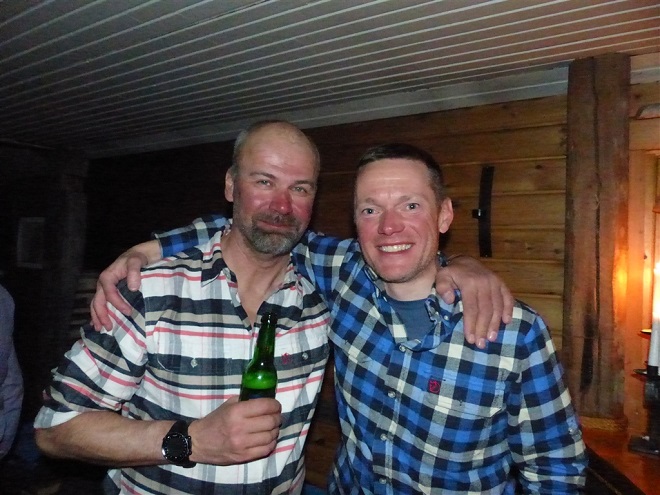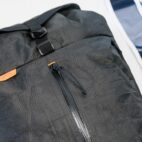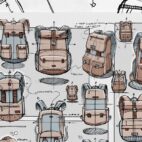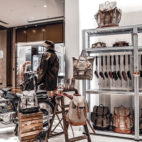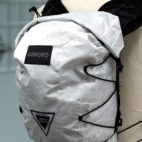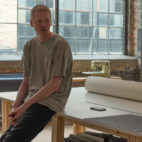Interview with Phil Raisbeck :: Fjällräven Polar 2014 participant
For part two of our Fjällräven Polar series we went direct to the source – 2014 participant Phil Raisbeck who kindly agreed to share his first-hand experience of this amazing and exhilarating event…
–
Can you provide us with a bit of background on yourself?
My name is Phil Raisbeck, I’m 43 years old and I live in Sunderland in the North East of England, where I work as an IT Consultant for British Telecom, which I have done for nearly 18 years now.
My recent outdoor epiphany only started in the summer of 2012, when my step brother Ian asked me to join him on his life-changing 250km trek through the French Pyrenees where we did the Cathar Way. Since then I have been hooked on everything outdoors and this was followed by completing the 170km Tour du Mont Blanc trek last year.
Why did you want to participate in Fjällräven Polar 2014?
I first came across the Fjällräven brand in the summer of 2012 when visiting the Lake District, where I bought a few items of their clothing. After being impressed with their outdoor clothing range, I continued to follow the company. During that time I came across the Fjällräven Polar 2013 videos and my love of winter holidays over summer ones and the thought of being challenged in such remote extreme conditions made me determined to apply for the 2014 competition, which I was lucky enough to finish in 1st place and guarantee my place on Fjällräven Polar 2014.
How much outdoor experience did you have before Fjällräven Polar 2014?
Prior to my outdoor epiphany in 2012 I had not had much outdoor experience at all. Between the long-distance treks of the Cathar Way and Tour du Mont Blanc, I often visited the Lake District as well as some local walks in Weardale as part of my training for the treks. Last year I also joined the Edinburgh Young Walkers group to help me achieve one of my goals of completing the 282 Scottish Munros over the coming years. Although I live about 3 hours away from Edinburgh, I saw this as a great opportunity to explore more challenging mountains with like-minded people and try to make as many of the Munro walks as I can.
You’re not a stranger to long-distance trips, having completed the Tour du Mont Blanc and Cathar Way on foot. How did Fjällräven Polar (with its different factors such as extreme cold, having to handle the dog team and sled, as well as standing for long periods of time rather than walking) compare to these and other outdoor activities/events you’ve done?
The Fjällräven Polar was a lot different from my previous outdoor activities in that there was so much more you had to be aware of and look after. The extreme cold weather meant you had to make sure you followed the layering principle correctly in order to keep your body at the right temperature at the right times, depending on what activity you were performing. This could often involve changing into or out of the Fjällräven Polar Parka while travelling on the sled, which meant you had to choose your moment to change so as not to risk falling off the sled at the same time. You also have to fully concentrate while on the sled and control the pace of your dogs so as to not get too close to the person in front of you, as well as helping the dogs as you go uphill and slowing down when going downhill so the sled doesn’t get too close to your dogs.
How did Fjällräven Polar differ from your expectations of it? Was any of the experience in line with your expectations?
The major difference from my expectations of the Fjällräven Polar was how physically demanding it was on your body. Despite me preparing for the trek with extra physical training in the build-up with the help of the Department of Sport and Exercise Sciences at Sunderland University and being the fittest I had been in many years, I found the first day really hard going after only just 30 minutes, while helping the dogs by running and pushing the sled up the first of many hills. Even with increased fitness levels, doing such physical activity in such extreme conditions takes a lot more effort than it would in normal conditions.
I also expected to have more time to chat with the other participants during the trek, but this wasn’t the case. As each day is so long and you are constantly on the move and seeing to your daily tasks, you just don’t have the time. The only people you really get to talk to is your fellow country team member, who was also called Phil, the two people from the country team you are paired with, which was Madeleine and Jostein from Norway and our team musher Amanda. The only time you really got to chat to the other participants was at the daily training session with Johan Skullman.
The one thing which did meet my expectations prior to the Polar was the stunning scenery and remoteness in the Arctic wilderness. It really was everything I expected it to be and more. You really get a sense that you are in another world.
One of the ways you prepared for Fjällräven Polar was by doing a winter skills course in the Scottish Highlands. What overlaps were there between the winter skills course and the Fjällräven Polar training? What skills did you learn during the Fjällräven Polar training that you didn’t already know?
There were a number of skills I learned on my winter skills course which overlapped with the Fjällräven Polar training. One of the main ones was having to do everything with your gloves on, such as eating and changing clothes as well as many other tasks. Another was to always be aware of your surroundings and weather and especially the wind and to make sure none of your clothing or equipment gets blown away while using it. Although I was aware of the importance of wearing layers in different conditions, Johan Skullman explained this in greater detail and I was surprised how easy it was to maintain correct body heat at all times during the trek by using the clothing we were provided with and using it at the correct times.
The main new skill I learned during the Polar was the importance of positioning of your tent while setting up camp to help against changing weather conditions. The other was how to make fire with just your knife and a magnesium fire starter.
Can you tell us what it was like learning to handle the dogs and sled? What daily care did the dogs and sledding equipment require? Did you form a special bond with your team of dogs?
Handling the dogs was a lot harder than I thought it would be. I wasn’t expecting them to be so powerful, as all they want to do is run and if not handled correctly they can quite easily pull you off your feet, but at the same time they are very placid dogs, and love any attention you give them. You had to concentrate fully when on the sled so as to not overwork the dogs. This involved helping them when going uphill by running and pushing the sled behind them so they don’t struggle pulling the full weight of you and the sled and also slowing down when going downhill so the sled doesn’t hit the dogs and the back of the line. You have to maintain a taut harness between the dogs and the sleds as best you can at all times.
The dogs were always your number one priority. They were the first thing you attended to when you woke up and when you arrived at your camp for the night. First thing in the morning you feed the dogs before you do anything else. When arriving at your camp for the night you first set up your dog chains so you can harness the dogs for the night, while keeping them in the order they are positioned on your sled, before feeding them. At the same time keeping enough distance between them and another team of dogs so they don’t fight with each other. You also have to cover some dogs with a coat for the night and a snow shelter wall if required, depending on the age and breed of the dog.
I didn’t personally form any special bond with my dogs; this may have been due to some of my dogs being switched during the trek due to behaviour and speed of other dogs in our team. There were other participants who did form a bond with certain dogs from their team.
What was the most useful skill you learned during the experience?
I think increasing my knowledge of the correct layering of clothing and pitching of the tent were the most useful skills I learned. Another was the importance of keeping hydrated, as your body needs to be kept just as hydrated as it would if you were in hot summer conditions.
Could you give us a general overview of your daily routine? For instance what time you woke up, what tasks needed to be done daily before sledding began and after sledding had finished for the day when it was time to make camp, how often you stopped for breaks, etc…
Our daily routine started at around 6am every morning when we woke up. The first task every morning was to see to your dogs and prepare their breakfast. Once the dogs have been fed you can start to look after yourself and prepare your own breakfast as well as fill water bottles for the day ahead. After breakfast you pack all your personal belongings from your tent before taking down the tent and packing everything on your sled ready to start the day’s sledding, which was around 08:30 to 09:00.
We tended to stop once for a lunch break at around 14:00, which involved giving the dogs a snack before feeding ourselves with one of our REAL Turmat meal packs. The length of the breaks varied depending on how far we had travelled and how far was still to go until our next camp in order to not get to the next camp too late. There may be other very short stops if someone was having a problem with their dogs or needing a toilet break, but these didn’t happen very often.
We usually arrived at our camps for the night from anywhere between 18:00 and 20:00. Once you arrive at your camp the first thing you do is remove the dogs from the sled and attach them to the chain you set up for each team of dogs, before preparing their dinner. Once the dogs have been fed you start to erect your tent and prepare your own food. You often don’t get to eat until around 22:00 followed by bed at around 23:00.
A journey is just as much about what you hear, smell and feel as it is about what you see. Could you describe any distinct sensory experiences you were exposed to during the trek?
The sleds do scrape across the snow and ice and the sound and speed can vary depending on the type of snow and ice you are crossing. It’s also very quiet as you are travelling where all you can hear is the faint panting of the dogs and the sound of the sled runners cutting through the snow and ice. At times you can really feel the wind on your face and you are so grateful for having the Fjällräven neck gaiter provided. We all constantly wore the neck gaiter as the wind can change so quickly and you need to have it at hand to use when required. The main smells experienced during Polar which I remember are from the dogs. You can really smell the dogs as you wake and carry out your tasks of feeding them in the morning and evening. You didn’t really smell anything when cooking our food as it was just a case of boiling water to pour into our freeze-dried food. The main smell was from cooking the food for the dogs.
How difficult or easy did you find being cut off from the outside world without conveniences such as an electric kettle or hot shower – but also without the distractions and stresses that accompany day-to-day living and that can sometimes prevent you from enjoying the wonders of the outdoors?
I didn’t find it difficult at all and it felt quite liberating being cut off from the outside world, especially in the constant electronic media world we now live in. By being cut off from your normal day-to-day life, you really got to appreciate the amazing surroundings we were in during the trek and we had been provided with the correct training and clothing for such an environment. I didn’t once miss the home comforts which we are all used to such as hot showers and a kettle and many others, and found sleeping in a tent with the correct sleeping bag and night-time layers to deal with such conditions a very pleasant experience, so much so, that I slept better in the tent during the trek than I do usually at home, where I often suffer from various forms of insomnia.
While sledding, the most important thing to remember is to never let go of the sled. Did you ever let go during your journey (and if so how did you get back on)? Were there any sections of the route that were particularly tricky to navigate?
Never let go of the sled is one of the most important things you are told by your musher, as if you do the dogs will just run away with your sled and all your equipment. You are always conscious of making sure you never do let go, even when you do fall, which I did a couple of times on the first day. But as you fall you take the sled with you and fall to one side. As you and the sled are on the floor to one side, it makes it difficult for the dogs to pull away. Getting the sled back up without letting go of the sled handle can be tricky, as your feet can’t be on the sled runners as you push the sled up, and as soon as the runners touch the snow again, the dogs are already trying to pull, which means you have to be quick and jump back on the runners as the sled is moving.
One of the trickiest parts of the route was the route to our camp in Sevvovouma with the roller-coaster ride through the forests and lakes leading up to the infamous steep slope where many have fallen in the past. Luckily I managed to hang on down the steep slope, unlike Paul from Germany who had a rather spectacular journey down the slope as his sled fell to one side, but he refused to let go of his sled as his 6ft 5” body and face was dragged through the wall of snow all the way down. Luckily he was unhurt and quite enjoyed the face cleansing by the snow on his way down.
What was your favourite place along the route?
I think my favourite place along the route was when we arrived in Sevvovouma where we would spend the night in our self-build snow camps rather than our tent. We were surrounded by beautiful forest with perfect weather conditions. We were also treated to a two-song acoustic set by Björn and Gustaf from Swedish band Mando Diao around our large campfire, before retiring to our snow camp to sleep under the stars where the Northern Lights also made their first appearance of the trek. It was simply a stunning night which I will never forget.
What was your experience like with the other participants? Do you keep in touch with any of them? Perhaps plans to meet up and do another outdoor trip together?
The other participants were an amazing group of people. Even though we were from many different backgrounds and ages, we all got on so well. This was helped by getting to know each other virtually in the four-month build-up to the Fjällräven Polar via our private online group and WhatsApp mobile group, where we even gave each other nicknames prior to meeting in person. When we met for the first time in Sigtuna it was more like a family reunion than 20 strangers meeting for the first time.
Yes I still keep in touch with all of my fellow participants as we still share stuff via our private online group and WhatsApp, as well as keeping in touch with some directly via text message and other methods on a daily basis.
I have just come back from the Lake District after spending a week there with friends and was joined by Manon from Holland who came to stay with us for 4 nights after I invited her over for a visit, which she thoroughly enjoyed and she is looking forward to visiting again.
There is also the Fjällräven Classic in August, which is a 110km trek through the Swedish wilderness close to where we ended the Fjällräven Polar, and there are 9 of the 20 Polar team taking part, so we are already in the planning stage for that.
I’m also arranging a trip to Scotland to do Ben Nevis in August and some of my fellow participants are hoping to come along. I also plan to visit my Norwegian friends in the future as well as many others I’m sure.
I was also told by Katrina from Estonia that I’m the “glue” that will keep us together by arranging many more future meetings between us, which I look forward to doing.
I really couldn’t have asked for a better group of people to share our amazing Fjällräven Polar adventure with and I know I have made many new lifelong friendships along the way.
What was your favourite part of the trip as a whole?
I think my favourite part of the trip was the night at Sevvovouma where we had to sleep in our snow camps under the Northern Lights. It was one of the few times you got to chat with the other participants for any length of time, as well as being treated to an acoustic performance from Björn and Gustaf from Mando Diao. It was an amazing night.
What was the greatest challenge you had to overcome during the journey?
I can’t think of a specific challenge I had to overcome, though I did have concerns prior to the trek that I might not be able to sleep well at night in a tent in such conditions, which would result in me not having enough energy for the following days. But this wasn’t the case as I previously mentioned, as due to the long demanding days I actually slept better than I do normally at home.
Could you give us some insight into the performance of the Abisko 75 pack during Polar?
The Abisko 75 is an excellent rucksack and was more than enough in size to carry all of our personal equipment required for Polar. I was particularly impressed with how much the lid on the top of the rucksack extended to give extra space. We didn’t have to carry it so much during Polar as it was in our sleds most of the time. The only time we carried it like a rucksack was from the short distance between our sleds to our tents and when travelling through airports during the journey to and from Stockholm.
You also used the Abisko 75 pack to do a Hadrian’s Wall walk in preparation for Fjällräven Classic. How did the pack perform in this very different environment?
Yes I recently tried the Abisko 75 on a local hike loaded with 16kg of weight in preparation for my forthcoming 110km Fjällräven Classic trek in August with six of my fellow Polar participants. Again the rucksack performed very well, so much so that I have now sold my two other Berghaus rucksacks as I much prefer the comfort of the Abisko 75. I plan on doing further practice hikes with this rucksack as a build-up to the Classic and will write a review on my blog site in due course. [Editor’s note: Phil’s review is available here.]
Was there a weight restriction for what could be carried on the sled/pulled by the dogs?
There wasn’t a weight restriction on what could be carried on the sled, though we did distribute the weight as evenly as we could between the sleds amongst our own teams. We carried our own rucksacks, but distributed the equipment we shared between the team, like the dogs’ cooking equipment and food.
Did you overcome any fears during your journey and/or feel you’ve changed in any way from the person you were before the trip?
I did overcome the fear I had of not being able to sleep during the trek. Whether this was due to the long challenging days or being shut off from the outside world and daily stresses, I’m not sure. Maybe it was a combination of both.
I don’t feel I have changed a great deal as a person since the trip, though it has made me even more determined to want to experience similar challenging adventures in the future. I do feel it has made me more confident in being able to push myself more in my future outdoor adventures, which I hope to do.
I also feel I learned things from some of my fellow participants and their outlook on life, which I would like to bring to my own life in the future.
Would you do Fjällräven Polar again and/or recommend it to others? If so, why?
As much as I would love to do the Fjällräven Polar again and although a few of us have discussed doing something similar ourselves in the future, I really do think it should stay as a “once in a lifetime” experience. Doing it again would never feel the same as it did the first time. Part of the excitement of the Fjällräven Polar is experiencing all these new things for the very first time and being challenged in ways you never thought you would be. I will certainly be experiencing similar conditions and adventures in the future, but I will leave the Fjällräven Polar for new people to experience and would thoroughly recommend it to everyone.
Anything else you’d like to add?
I’m so grateful to Fjällräven for giving people like myself and fellow participants the opportunity to experience such an adventure. All the people at Fjällräven, Johan Skullman, fellow participants, mushers, cameramen, photographers and all the other behind-the-scenes people helped make it the best experience of my life which I will never ever forget.
*Photos courtesy of Håkan Wike and Phil Raisbeck





 Carry Awards
Carry Awards Insights
Insights Liking
Liking Projects
Projects Interviews
Interviews

